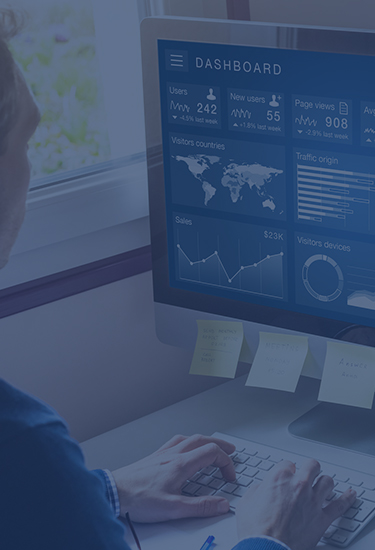The holidays are fast approaching, and that means retailers and wholesalers must be efficient in organizing their products and managing the inventory of their products.
Depending on the size of your operation, how you manage your products may differ. However, warehouse inventory management is not just a requirement for compliance with SEC regulations and the Sarbanes-Oxley Act (SOX) for public companies—it’s crucial to the success of any retail company.
We’ve put together this brief guide to help you understand the basics of warehouse inventory management.
What Is Warehouse Inventory Management?
Warehouse inventory management is the system used to organize and track all of the company's owned products. For warehouse operations, this helps to ensure the right level of inventory is in the right place at the right time. Inventory is then converted to revenue once it’s sold.
In the United States, manufacturers, retailers, and merchant wholesalers carried more than $1.9 trillion in inventory in June 2018, according to the U.S. Census Bureau.
Accurately evaluating the inventory for the company’s balance sheet requires either physical stock count or an automated inventory system that creates an accurate record of each inventory-related transaction.
This quantitative product management differs slightly from a company’s warehouse management system (WMS), an umbrella term that supports the entire operation of a warehouse, including inventory management.
The best warehouse inventory management systems keep track of products and provide actionable business intelligence, such as identifying trends in product performance and sending reorder notifications when stock is low.
Current warehouse inventory management systems are outdated and often haven’t embraced everything automation has to offer.
Features of Inventory Management
There are many steps involved in warehouse inventory management, some of which include:
- Picking and packing
- Shipping
- Managing locations
- Receiving orders
- Tracking inventory levels
- Cycle counting
- Generating reports
- Providing business insights
What Are the Different Types of Inventory Management?
Manual
Every step of the delivery, tracking, loading, and data manipulation is done by workers. This manual system can increase the risk of human error at any point in the inventory management process. If there is ever a mistake, the only method of resolving the problem is another manual re-do.
Another downside to this type of inventory management is its unsustainability for more significant warehouse operations. Without computerized report generation, companies may see difficulties in turning paper-based information into useful data.
Barcode
This system uses the familiar label of black stripes that are affixed to the product, packaging, or pallet. Using wearable barcode readers, workers can speed up warehouse inventory management and save seconds scanning per item. This digital format is efficient and accurate by counting goods in real-time.
RFID
Radiofrequency identification tags are found in two configurations: active and passive. Active systems use battery-operated tag readers located throughout a warehouse and updates of inventory count and location. Passive systems are read-only when someone activates the readers through hand-held devices. Passive technology can be read at up to 40 feet, while active readers are effective up to 300 feet, but both systems automatically record inventory.
Warehouse Robots
With growing advancements in technology and automation, companies are starting to turn to optical systems mounted on the ground or aerial platforms. These systems use machine learning to read existing labels without barcodes or RFID and maintain accurate, up-to-date inventory.
Warehouse Inventory Automation: Is This the New Norm?
Modern supply chains are more complex than ever. Traditional manual processes are no longer viable for businesses that want to optimize workflows and reduce wasted resources.
Automation is the natural solution to these problems. It’s ideal for individual warehouses or companies that support numerous locations across the entire supply chain.
Effective fulfillment requires sophisticated solutions that are able to predict trends, make actionable recommendations, and increase the visibility of potential issues before they turn into larger problems.
Successful manufacturers, 3PLs, and retailers know the importance of optimized supply chains. That’s why they’ve heavily invested in cloud-based automation solutions for their supply chains.
Automate Your Warehouse Inventory Management With Tangentia
Here at Tangentia, we understand the transformative difference automated solutions can make for your business.
When you’re processing hundreds or thousands of pallets or cartons per day, automated processes can significantly save time, effort, and costs. For many retail companies, creating greater warehouse inventory management efficiency translates to a multi-million dollar impact.
Are you interested in learning more about warehouse inventory management automation? Get in touch with Tangentia today to learn more.
Get Started Today
Tangentia is a Platinum Partner of IBM and well as partners with Automation Anywhere, UI Path, Blue Prism, Adobe, Microsoft, Salesforce, Amazon and leading enterprise software vendors. We work with customers globally with offices in Canada and India to implement their RPA strategies using an agile methodology.
Read Now

































